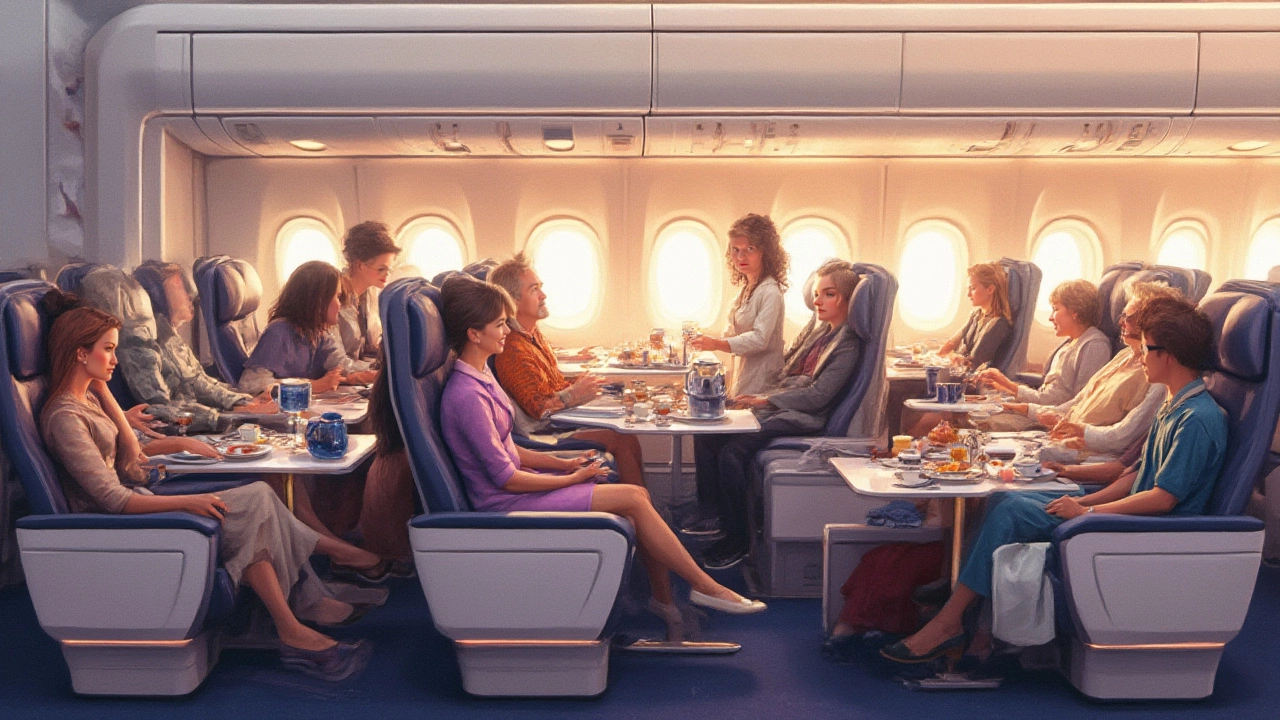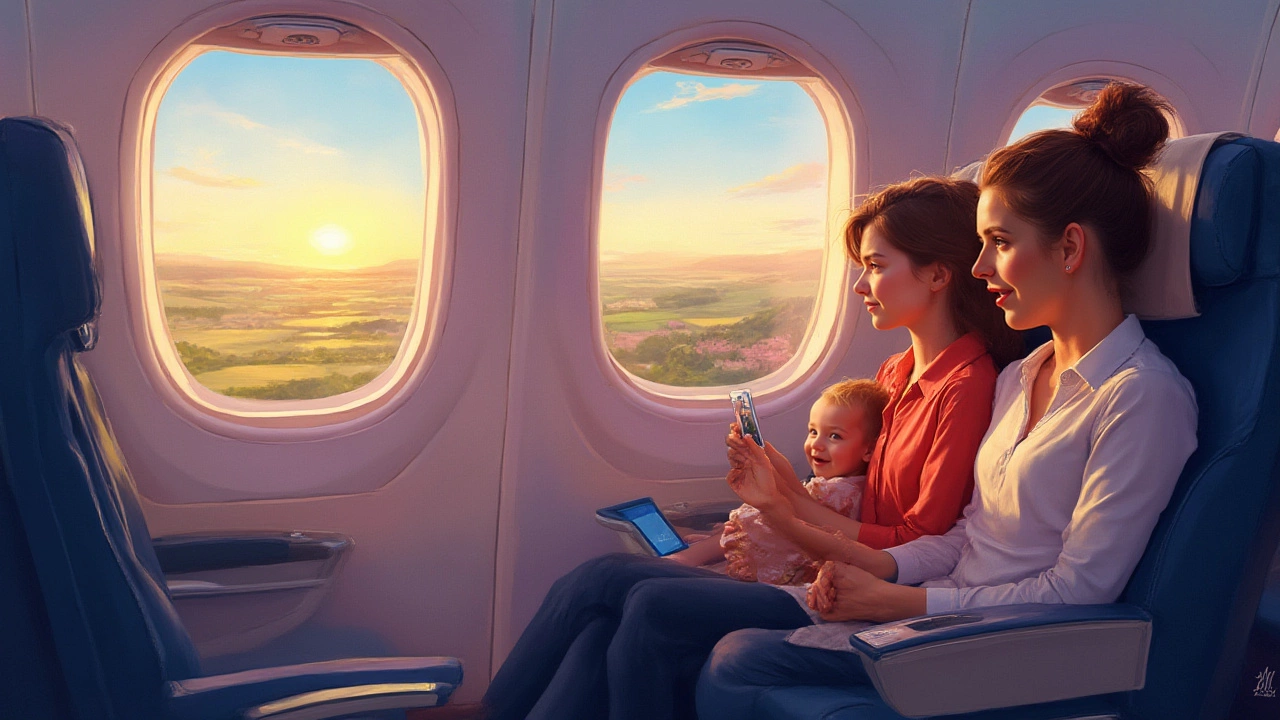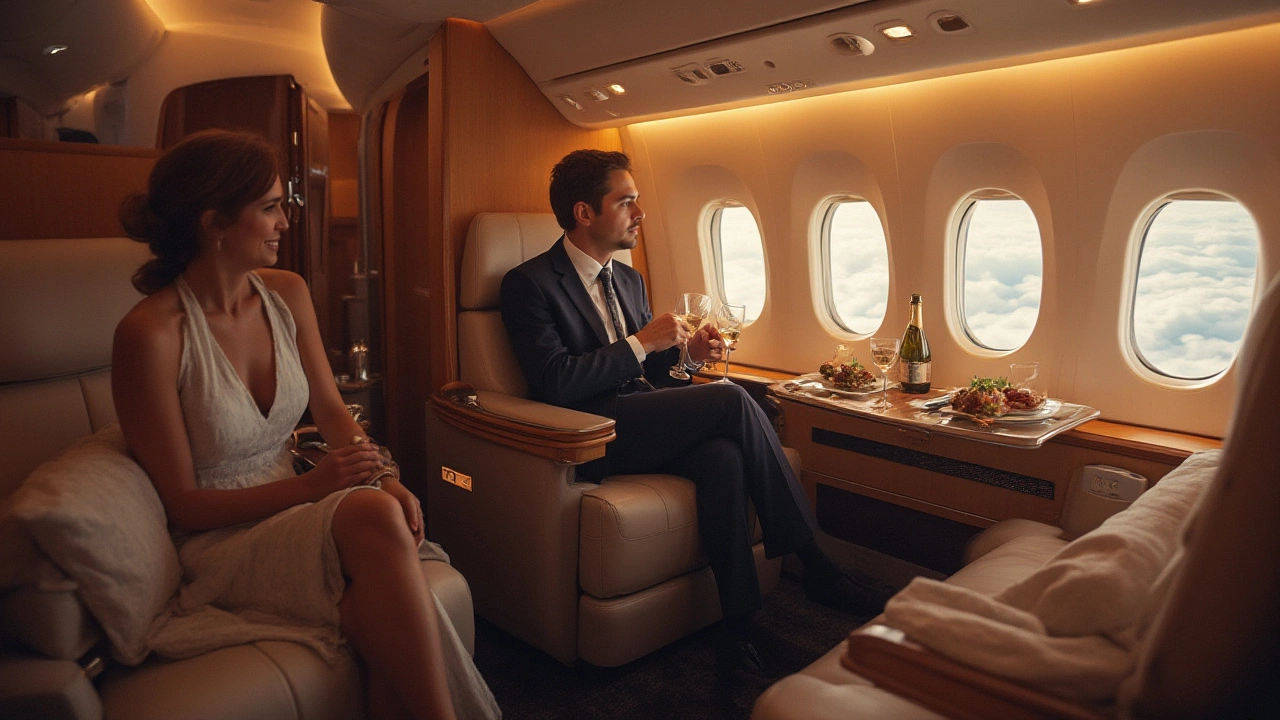If you’ve ever dragged yourself off a cramped, dry-skinned, and sleep-deprived long-haul flight, dreaming of somewhere less, well, cattle class, you’ve probably wondered: which airline actually nails the cabin experience? Let’s get real: not all airplane cabins are created equal. Some carriers treat the cabin like a five-star hotel in the clouds, others still offer a flying tin can with a view. It’s not just about seat width or free drinks anymore—the world’s top airlines are battling it out for who can make the hours aloft feel most like turning left into a world of comfort and pampering. Some have shower suites, while others barely muster a USB port that actually works. If you’re shelling out hard-earned cash (or those jealously-guarded air miles), what can you actually expect once you step onboard? There’s no need to fly blind—we’ll break down what sets the best cabins apart, who’s winning the sky wars right now, and how you can maximize your own in-flight comfort, even if you’re stuck in economy.
What Makes an Airline Cabin Stand Out?
A cabin isn’t just seats and aisles. Think about it: why do some people grin when they see a certain airline’s logo at the gate? It comes down to the full package—how you feel, what you can do, how you’re treated, and those little touches that make 10 hours at 38,000 feet tolerable or even enjoyable. There are four big factors that really separate the decent from the best.
- Comfort and Space: This is the heart of it. In economy, a comfy seat just means you get to Dublin without your knees in your chin. But step up to business or first class, and it’s an entirely new world. Some airlines give you over 30 inches of seat width, others still cramp you nine-abreast in a cabin designed for eight. Lie-flat beds? Not all are made equal: Qatar Airways’ Qsuite gives you privacy doors and a double bed option—perfect if you’re traveling with a partner or just want to cocoon. Singapore Airlines is legendary for plush leather seats and personal nooks that turn into truly flat beds long enough for, say, a rugby player.
- Service and Amenities: Some airlines train staff to perfection, making you feel like a guest instead of a burden. You might get pajamas (Qantas first class spoils with soft cotton ones), designer amenity kits (think Bulgari on Emirates), or a choice of chef-created meals that put most airport restaurants to shame. Japanese carrier ANA even offers bidet-toilets in first class, which is a level of attention that’ll spoil you for any loo on land.
- Innovation and Technology: It’s not just screens anymore (though having a clear, responsive touchscreen with thousands of hours of content helps—Emirates and Qatar are both excellent here). USB and AC charging now are table stakes. True standouts have Wi-Fi that actually works (Singapore, Qatar, Delta’s Delta One), mood lighting that helps you adjust to new time zones, and even air purification systems like those on ANA’s new Airbus A380s.
- Privacy and Design Flair: Luxury cabins should feel like a sanctuary. Suites with sliding doors, like those on Etihad’s First Apartment or Emirates’ brand-new 777 First Class, mean you don’t even see other passengers unless you want. If you’re on a long-haul, nothing beats the peace of knowing you can shut out the world, put on noise-cancelling headphones, and binge your favorite shows in peace. Some airlines—like Virgin Atlantic in Upper Class—mix it up with social spaces, cocktail bars, and even a lounge for stretching your legs mid-flight.
It’s the sum of these details that turns just getting from A to B into something special—or, at the very least, bearable.
The Ultimate First Class: Going Beyond The Seat
First class is where the wildest cabin dreams come true. For a price (sometimes enough to buy a decent used car), you’ll get privacy, pampering, and experiences you can’t find anywhere else. Sure, the champagne and caviar are great, but it’s the little things that define which airline really nails luxury.
Let’s get specific. Emirates has turned its First Class suites on its new 777-300ERs into real mini-rooms. With floor-to-ceiling walls, sliding doors, and even personal climate controls, you get a few hours as absolute king of your airborne castle. If you want to chat with the crew, you press a video-call button—no service bell ringing here. The seat reclines into a fully-flat bed with fine-thread linen, and there’s a mini-bar in your suite. They even offer virtual windows in middle seats, showing high-def real-time images so you’re never dealing with a blank wall.
Etihad’s First Apartments on its A380s are like nothing else: the space is so generous you can hold a private yoga class. There’s a seat and a separate bed, a dressing area, and access to an in-flight shower—ideal if you want to freshen up before landing in Sydney or Abu Dhabi. If money is truly no object, there’s The Residence—the only three-room cabin in the sky, with a double bed and personal butler.
Singapore Airlines’ Suites Class makes you feel like a celebrity. Starched sheets, doors for complete privacy, and meals served on bone china using Givenchy tableware—all with spot-on Singaporean courtesy. Cathay Pacific, meanwhile, keeps it sleek with huge seats and classic Hong Kong hospitality. Don’t forget Air France La Première if you want French style, from designer pajamas to menus curated by Michelin-starred chefs.
And cab experience isn’t just about flash. For those who value peace, the noise-cancelling doors, thoughtfully synced mood lighting, and upgraded cabin air (Emirates even boasts a “zero-gravity” seat position designed in consultation with NASA) can mean the difference between arriving refreshed or frazzled. For first-timers, a tip: sometimes, redeeming frequent flyer miles is the only sane way to afford these experiences. Booking well ahead or catching a last-minute upgrade at check-in works, if the travel gods are smiling.

Business Class: The Sweet Spot for Most Fliers
It’s not all champagne wishes and caviar dreams for most travelers, but business class is where airline cabins get incredibly competitive—especially on international routes. Forget the old days of slightly bigger seats. Now, business class means fully-flat beds, heaps of privacy, and restaurant-level dining plus service that ranges from friendly to downright doting.
An easy crowd favorite is Qatar Airways’ Qsuite. It gets talked up for good reason: you can close real privacy doors, combine four seats into a family-style pod for groups or open up a double bed for couples, and there’s never a bad seat in the house. The details impress too—super-soft blankets, Diptyque amenity kits, on-demand dining, and their cabin crew actually remember your name.
Turkish Airlines is often overlooked but knocks it out of the park with chef hats (literally; they have flying chefs) and more Turkish delight than you can (politely) eat. ANA and JAL, the Japanese giants, bring meticulous craft—expect bento-box meals in business (sushi and all), plush cabins, and toilets with bidet seats for that extra touch of comfort. Then there’s Singapore Airlines, who pioneered the ultra-wide business seat. You practically wallow in space, and it’s weirdly easy to forget you’re on a plane if you get lost in their oversized screen and noise-cancelling headphones.
Virgin Atlantic and Delta’s new Delta One Suites both go for those sliding doors and ultra-modern look, plus a focus on hefty Wi-Fi, unlimited snacks, and good sleep. Lufthansa, Swiss, and Air France are all solid choices for fans of European design—expect subdued elegance, a good wine list, and attentive service. Each airline will have its quirks. For instance, Air Canada’s Signature Class offers lie-flat pods even to smaller cities, while JetBlue’s Mint cabin is the only U.S. domestic business option with full suite doors.
Pro tip: pay attention to which aircraft model you’re booked on. Sometimes the same airline will have a world-class new cabin on, say, an A350 or 787, but old, angled seats on an aging 767. Sites like SeatGuru help, but so do frequent flier forums for the truly obsessed.
| Airline | Business Class Seat Width (inches) | Seat Pitch (inches) | Privacy Doors? | Signature Amenity |
|---|---|---|---|---|
| Qatar Airways (Qsuite) | 21 | 79 | Yes | Configurable suites, sliding doors |
| Singapore Airlines (A350/777) | 28 | 78 | No | Ultra-wide seats, Book The Cook |
| ANA (The Room) | 23 | 76 | Yes | Full doors, bidet toilets |
| Virgin Atlantic (Upper Class) | 20.5 | 78 | Yes | Onboard bar, Virgin Red Wi-Fi |
| Lufthansa (New Business) | 20 | 78 | Partial (shoulder panels) | Real duvet, espresso bar |
When choosing, think not just about meals and bedding, but your own priorities: privacy, power outlets, Wi-Fi, or just the fastest way to sleep. And consider timing your booking when airlines are rolling out new seats—sometimes you’ll luck into flying the flagship cabin on a less-busy route.
Premium Economy and Economy: The Best of The Rest
Not everyone’s ready to drop the cost of a weekend in Paris on a single flight. That’s where premium economy and, yes, regular economy manage to surprise—if you know where to look.
Premium economy isn’t just a slightly better meal; it’s usually a dedicated cabin, extra inches of seat width and pitch, a deeper recline, and upgraded everything. Singapore Airlines, once again, leads the pack with a proper footrest, huge 13-inch screen, and real silverware in premium economy. Virgin Atlantic and Air New Zealand stand out too—Virgin for its cheeky service, plush seats, and good food; Air New Zealand for roomy seats that slide forward (so you recline without thumping the person behind) and innovative leg-rests.
On transatlantic flights, British Airways, Lufthansa, and Air France all offer competitive products. Turkish Airlines surprises again—its premium economy was so comfy passengers started skipping business class, so they axed it, but the lingering legend remains. If you’re stuck in American or United domestic, the step-up is called "Premium Plus" or "Premium Select"—the gap between cattle class and comfort isn’t quite as wide, but it helps on overnights.
But economy cabins matter too. Some have almost cult status, like Japan Airlines’ "Sky Wider" seating (18.5 inches wide, more padding, and adjustable wings), or the double armrest trick on Emirates’ A380s. Turkish brings extra inches and actual edible food, Qatar offers USB outlets and mood lighting, and Singapore still treats passengers with excellent hospitality even in the back. The worst offenders still manage 17 inches and 30-inch pitch in 2025, but others now push 32-34 inches—hunting for these on SeatGuru makes a huge difference for taller or broader travelers.
- Look for 2-4-2 or even 2-3-2 layouts on older A330s or retrofitted 777s for a more spread-out economy ride.
- Go for the quietest seats (usually near the front of the cabin for less engine noise), and bring your own headset if you like decent audio.
- Hydrate aggressively—air at altitude is drier than the Sahara. Some new aircraft, like the Airbus A350 and Boeing 787, have higher humidity and lower cabin altitude, so you actually step off less dehydrated. Worth choosing if you have the option.
- On red-eyes, ask for bulkhead rows or exit rows if you want to stretch (babies cry, but your knees will thank you).
Economy may never rival suites, but picking the right airline makes those hours a lot less grim.

Which Airlines Consistently Deliver the Best Cabins?
The world’s best seats and service can shift as new planes and products roll out or get quietly downgraded. But a few airlines keep winning awards (and traveler loyalty) by doing the fundamentals incredibly well—no matter which cabin you fly. If you want to bet on a brilliant cabin experience, here’s who’s out in front as of July 2025.
Singapore Airlines sticks to the top of nearly every ranking. Their dedication to making each cabin—from mind-blowing Suites to the last row in economy—consistently spacious, service-minded, and high-tech keeps people coming back. Nothing feels like an afterthought, which is rare.
Qatar Airways dominates business class. Their Qsuite isn’t just a seat—it’s a private retreat and workspace in the sky, and their attention to crew training and detail sets a high bar. They’re obsessive about comfort (even their economy pillow is better than some airlines' business), and they’ve made Wi-Fi and entertainment seamless.
Emirates has brought the bling, sure, but it’s substance too. Those suites with privacy doors, onboard shower spas, and a bar at 40,000 feet are matched with slick, massive IFE screens and an army of multilingual crew. They also offer among the very best premium economy cabins from London and Dubai, plus huge A380 economy cabins designed to avoid the worst of the crowds.
Japan Airlines and ANA set the standard for cabin quality in Asia. Their new first and business suites have all the privacy, tech, and comfort you’d expect, but with precise service that feels both personal and respectful.
European standouts include Air France La Première with Parisian flair, Lufthansa for serious comfort in all classes, and Virgin Atlantic for social, playful design and some of the best beds for London-bound fliers.
U.S. airlines have come a long way. Delta’s Delta One Suites, United Polaris, and American’s Flagship First aren’t as lavish as their Middle Eastern or Asian rivals but set the North American pace for privacy, bedding, and entertainment. For value, JetBlue Mint has upended things with private suites even on cheap domestic runs.
Here’s one truth from tens of thousands of fliers: the airline you pick makes a dramatic difference, but your specific plane and cabin can matter just as much. Double-check the plane model, check for refurbishments, and don’t be afraid to call before you fly—many travelers pull off surprise upgrades this way.
Want the best cabin possible? Stack your odds: choose an airline with a reputation for comfort, the newest planes, and most direct route. Use miles if you’ve got them, ask for a last-minute upgrade, or tweak your booking if you spot an aircraft swap to that new business or first class cabin. With a touch of luck, your next flight could be the highlight—not the hassle—of your whole trip.
